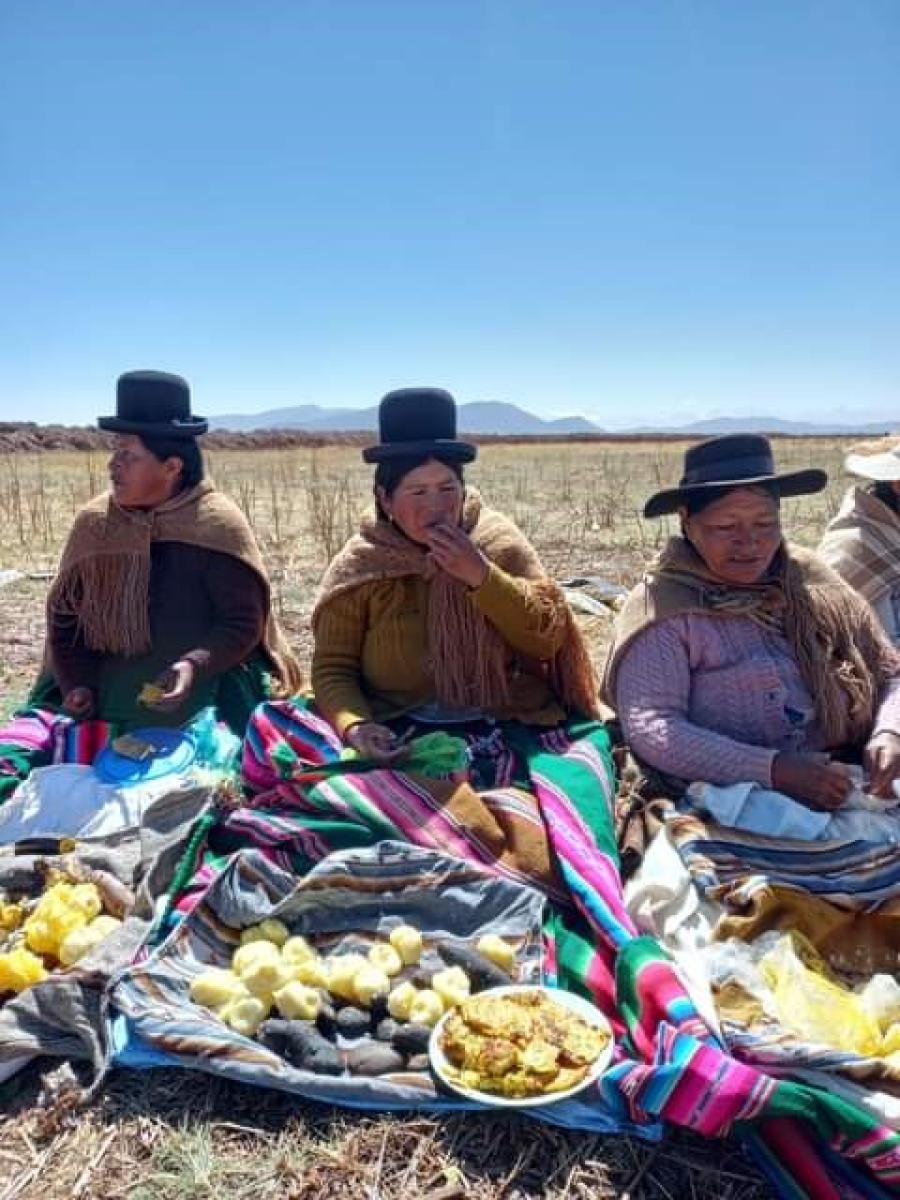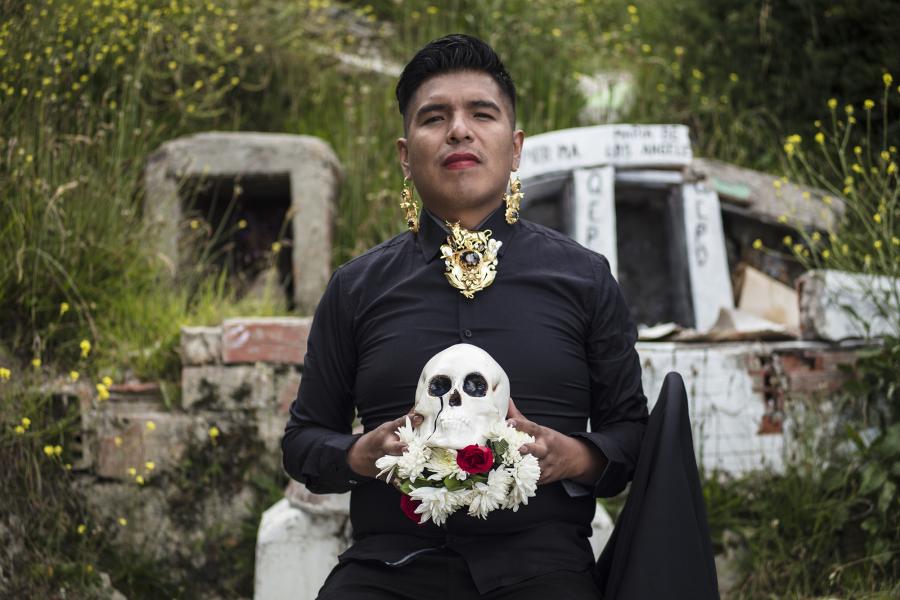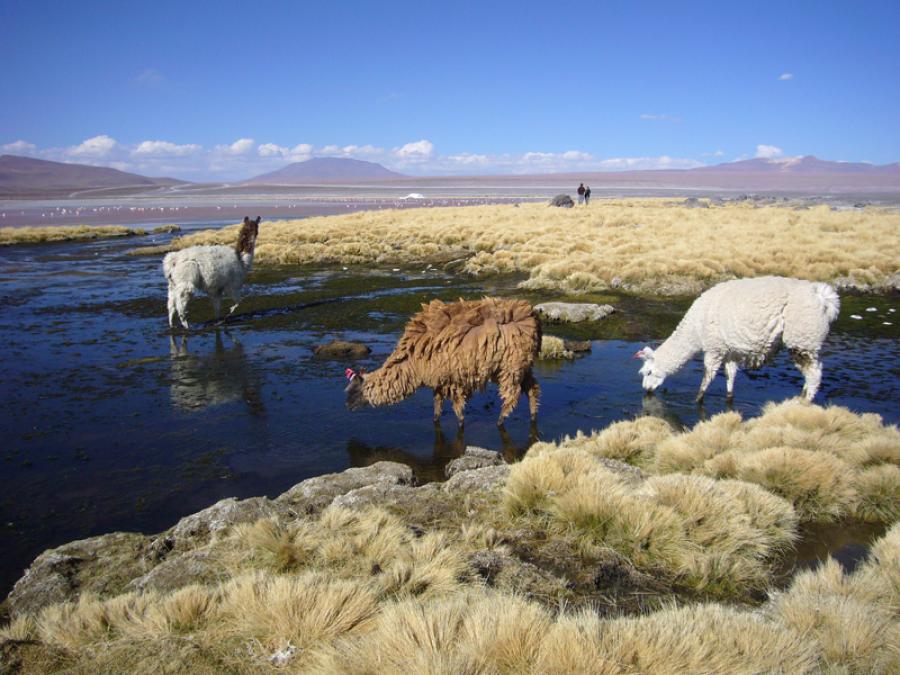Spanning over 7 million km.2 the Amazon Basin is home to the world's largest tropical rainforest and contains nearly half the planet's terrestrial biodiversity and one-fifth of all freshwater. Before the arrival of Europeans, between 7 and 15 million people from an estimated 2,000 tribes were believed to live in the Amazon Basin. Today approximately 400 indigenous groups remain with an estimated population of 2.5 million.
A new wave of large-scale development projects reminiscent of the environmentally and culturally devastating World Bank projects of the 1980s are once again on the horizon in the Amazon Basin. If built, these massive infrastructure projects (roads, waterways, pipelines, and dams) will expand trade in the Amazon region, opening up the heart of the world's largest tropical rainforest to intensive exploitation. These projects will bring in their wake, a trail of industrial logging, mining, oil extraction, cattle ranching, and large-scale agricultural development. At stake are millions of acres of pristine rainforest. These projects also present significant threats to indigenous peoples, their cultures, lands, livelihoods, and in some cases, their mere survival.
Consequences of Economic Globalization
Development in the Amazon is shifting into high gear due in part to economic globalization sweeping across Latin America. Since the early 1990s, the region's governments and international financial institutions have been quietly turning over control of Latin America's natural resources and state-owned enterprises to the private sector. This privatization trend is resulting in an influx of foreign investments. In 1997, US$75.4 billion in foreign investment poured into Latin America in search of high returns. And despite reduced levels of foreign investment due to the recent financial crisis, foreign investment will continue to play an important role in the development of the Amazon.
While historically, many Latin American countries cautiously guarded their borders against one another, in recent years they have begun to integrate their economies and borders by inter-connecting the region's transportation and energy networks. Mercosur (South America's. Free Trade Block) is now the world's fourth largest trade block. Brazil, South America's economic giant, shares borders with 11 of the 13 countries of the continent and is pushing forward its regional integration agenda. This agenda includes a series of new international roads, waterways, dams, pipelines, and power lines that traverse the Amazon region to create export corridors linking the interior of the Amazon to global markets and major South American population centers. These projects go hand in hand with the prevailing model of economic development that views the Amazon as a storehouse of mineral, timber, and energy resources to be exploited. Additionally, the extract and export model of economic development usurps local efforts to pursue sustainable economic development alternatives. Furthermore, many projects currently planned or underway violate international and national laws: ignoring environmental standards, failing to consult affected indigenous populations, and illegally traversing national parks, protected areas, and indigenous lands.
Indigenous Peoples' Response
Indigenous peoples, with backing from human rights and environmental groups, can and are using the advent of new projects as an opportunity to pressure governments to resolve longstanding ancestral land claims before such projects move forward. In some areas, indigenous leaders are mounting a chorus of resistance while in others they are pushing for programs to protect against loss of their culture and way of life. Indigenous peoples from northern Brazil, Guyana, and Venezuela formed a three-country alliance last August, 1997 during a historic meeting in Roraima, Brazil. They issued a joint declaration calling for legal guarantees to their lands, as well as detailed environmental impact studies in the three countries before governments proceed with an ambitious infrastructure development package. In the case of the $2 billion Bolivia-Brazil pipeline, the indigenous communities of the Gran Chaco have insisted on funds for land-titling programs and the implementation of an indigenous peoples' development plan. As Jerrick André, a Pemon indigenous leader recently said in a radio interview, "Our governments keep talking about globalization of the economy. The Indian people also want globalization, we want the globalization of our land rights."
In one the most dramatic struggles going on in the Amazon today, the indigenous peoples of Venezuelan state of Bolivar (Akawaio, Arawaco, Pemon, and Kariña), denied legal titles to their lands, are being seriously affected by the 450 mile Guri electrical power line to Brazil. In addition to the direct impacts from the line, indigenous groups fear the long-term impacts from planned gold mining, logging, and large-scale tourism development that the electricity will make possible. Since late 1997, they have challenged the construction of the power line through lawsuits, community organizing, and a number of protests. In particular, they have blocked the electric company's crews and paralyzed construction. Their resistance has received a significant amount of coverage in the international and national press and as a result, the Venezuelan government is feeling the pressure. In August, a commission of top government ministers met with the indigenous leaders and committed to set up a process to formally and legally recognize the affected communities' land titles. Although the government has since broke of talks with indigenous leaders, the resistance being mounted by the communities is certainly having an impact (for more information, please see the action alert on the Cultural Survival website www.cs.org).
The indigenous people's movement in Latin America is much stronger now than it was a decade ago when many of the same types of projects first surfaced. Indigenous organizations are much more aware of their legal rights and are supported by international NGOs. Challenged once again on their right for self-determination, indigenous peoples are demanding that new projects stop unless outstanding land claims are dealt with. Communities also want thorough environmental and social impact studies performed and the results discussed with affected groups. In short, indigenous resistance affected by new international trade routes can elevate their political and economic clout and assert their right to participate in development decisions that affect their territories and cultural autonomy.
New Export Corridors Threaten Indigenous Lands
The premise underlying the construction of export corridors is that once a region develops reliable energy and transportation infrastructure systems with access to global markets, economic growth will follow. Today's export corridors are based on various modes of transportation: roads, railroads and waterways. Using standardized metal containers, which can be interchangeably placed on rail cars, trucks or ships, these interconnecting transportation systems reduce financial costs of exports from frontier regions. These "intermodal" transportation systems, implemented throughout the world, facilitate the expansion of global trade.
Three export corridors, the Manaus-Caribbean Corridor, the Central Amazon-Atlantic Corridor and the Western Amazon-Pacific Corridor, are described below. The complete report is available upon request from Amazon Watch.
The Manaus-Caribbean Corridor
Paving international roads between Venezuela and Brazil; Brazil and Guyana; and Brazil and French Guyana are being promoted in Brazil's national development plan. In most cases, indigenous peoples are demanding that land claims be settled prior to the construction of these roads. Also, a treaty singed by the governments of Venezuela and Brazil authorizes the construction of a 450 mile power line in southern Venezuela and the bordering region of Brazil. The Guri power line would provide power to proposed gold mines in Venezuela's Imataca rainforest region and traverses the Canaima National Park, a World Heritage Site. On the Venezuelan side alone, the electric lines and gold mines affect some 15,000 Pemon, Akawaio, Arawaco, and Kariña indigenous peoples who are actively resisting the project.
The Central Brazil-Atlantic Corridor
In Brazil extensive dredging and widening of three tributaries of the Amazon River (the Tapajos, TocantinsAraguaia, and Madeira rivers) to create three industrial waterways or ship channels are on the planning table. Projects affect enormous areas of the savanna and rainforest ecosystems as well as numerous indigenous areas. In the case of the Tocantins-Araguaia Waterway, the Xavante Indians have vowed to stop the project and have won a court order temporarily prohibiting the construction until more studies are done (see the Special Project Update on page 16). The Tapajos Waterway has also been challenged in court, as it will have significant impact on several protected areas such as the Munduruku indigenous reserve. The waterway projects would provide cheap transport to the expanding soybean monoculture taking hold in Southern Brazilian Amazon at the cost of the surrounding indigenous communities.
There are plans for nineteen new hydroelectric dams including the controversial Xingu dam, which has been renamed the "Belo-Monte" dam. To make these new dams economically viable, a 1,000 km. power line is being built with funding from the Inter-American Development Bank to connect the electrical transmission grid of the Amazon region to that of southern population centers of Brazil. The dam projects are being offered as private concessions over the next several years.
Western Amazon-Pacific Corridor
Two road proposals exist for creation of an "export corridor" to link the oil and timber rich areas of western Amazon to the Pacific. These include a road from Acre to Lima (via Cruzeiro do sol), another road from Acre to Assis Brazil (on the border with Peru and Bolivia). The Acre-Assis is on the Brazilian government's current priority list. Two other roads are planned to connect Brazilian states of Mato Grosso and Mato Grosso do Sul to Santa Cruz, Bolivia; mainly to facilitate the transport of soy beans and minerals. The Inter-American Development Bank and the World Bank are currently considering funding the two roads in Bolivia.
Also, construction is now under way for the 3,000 km. natural gas pipeline connecting the gas fields in the Chaco and Beni region of Bolivia to Sao Paulo, Brazil. The $2 billion pipeline project which is half financed by the World Bank and the Inter-American Development Bank, is boosting new oil and gas exploration and production in the pristine rainforests on indigenous lands throughout Bolivia. Plans include the eventual connection of the B-B pipeline to Peru's Camisea gas fields.
Alternatives
The question of alternatives to these proposed transportation routes, although important, cannot be answered without first addressing the larger issue of whose economic development needs are being addressed by the construction of these global trade arteries. Whose needs do these transportation routes serve? Is it the needs of isolated communities for regional transportation systems or is it the corporations' needs for access to resource rich areas and routes to reach international markets?
Communities, especially those in remote areas, legitimately need viable transportation routes to bring in medical supplies, food, and basic necessities or to ship products to local markets. However, many proposed road projects are not being designed to serve the community's needs, but rather the needs of global institutions interested in low cost access to the Amazon's vast resources. Any benefit indigenous people receive is an indirect byproduct of the oppressive and manipulative multinational corporations, who are depleting natural resources and impinging on the rights of others for their own gain.
The energy projects in the northern Amazon are primarily designed to serve the growing industrial base of these remote areas, namely the mining, timber, and petroleum industries. The waterways and roads in the Central Amazon and Pacific corridors have not been proposed to help feed the region's population, but to help the large agricultural producers expand monocultural production of soy products and reduce costs for shipping these exports.
For the long-term viability of the ecosystems and the cultures of the Amazon, the real questions, which need to be asked, are what alternative models of economic development exist for the region in place of the current extract and export models? And how can the longterm needs of local populations be met without sacrificing established ecosystems and cultures?
Article copyright Cultural Survival, Inc.



